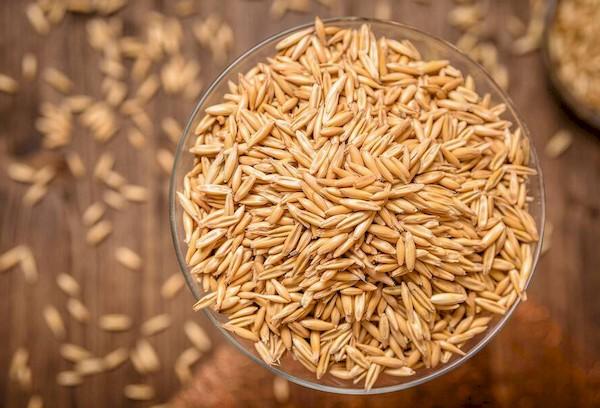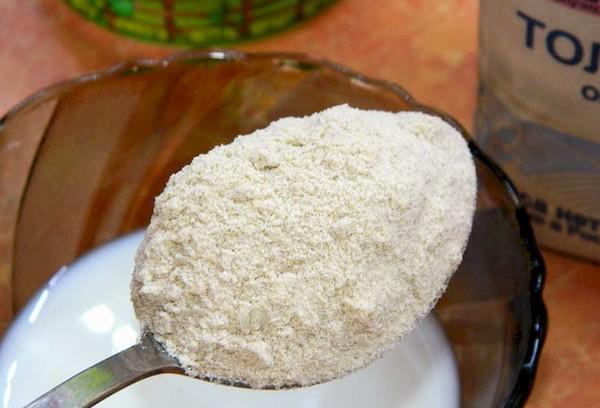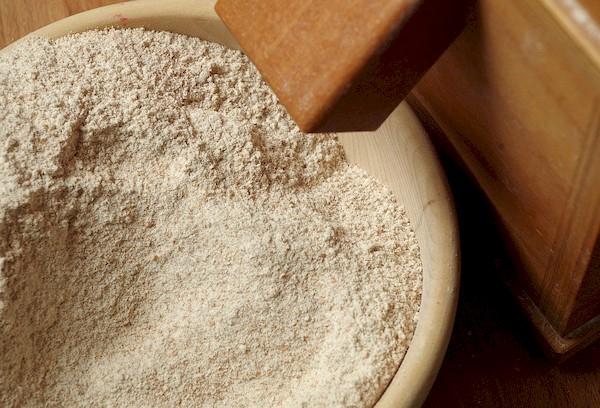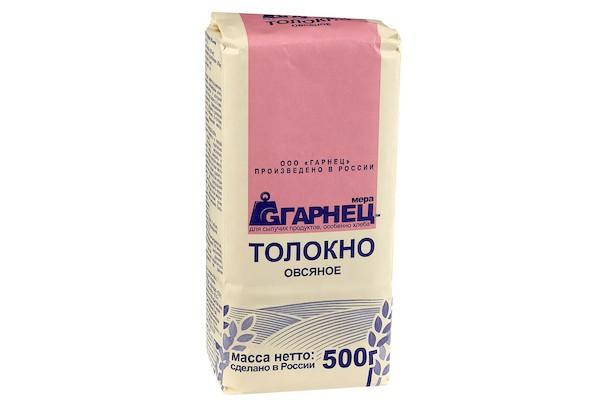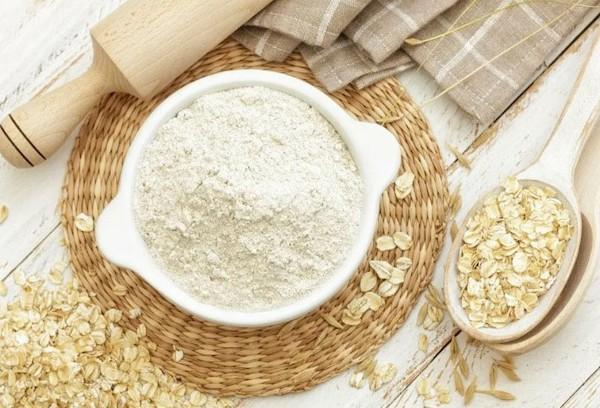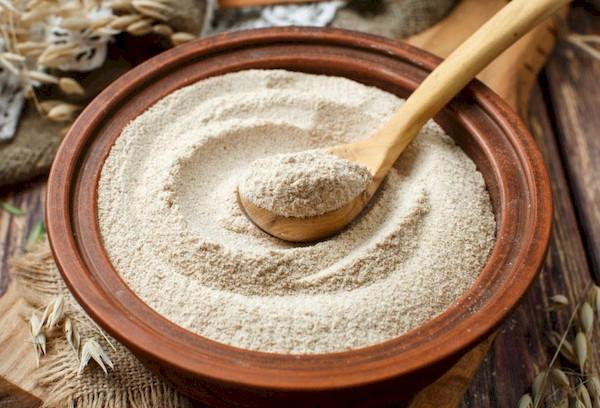Oatmeal: what is it?
Oatmeal is a flour prepared using a special technology from steamed and lightly fried grains. In Rus', this product was made not only from oats, but also from barley. And in Ukraine, Belarus, Sweden, Estonia and Latvia, a mixture of wheat, rye, barley and peas was also used for this.
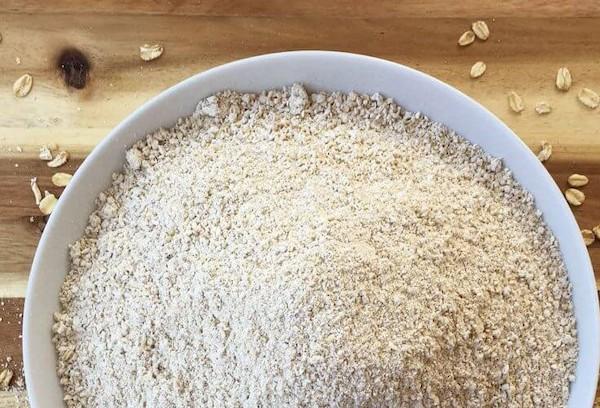
How oatmeal is made and how it differs from regular flour
In the old days, oatmeal was prepared from grains that were pre-soaked and dried overnight in a preheated oven. Then the oats were peeled and pounded in a mortar until a crumbly mass was formed. It is in connection with the method of preparation that this type of flour received its name (oatmeal - pound, push).
Currently, oatmeal is produced on an industrial scale. Although the manufacturing process has undergone changes, it still retains the traditional stages. Today oatmeal is prepared as follows:
- Oats are cleaned of debris and impurities and washed in cold water.
- They are soaked for several hours, and then sent to special kettles with a stirrer, where the raw materials are simmered for some time at a temperature of 110 C.
- The grain is dried in dryers, fried a little and cooled, and then the films are removed and crushed.
- The finished product is sifted and foreign impurities are removed. The result is a homogeneous, aromatic and “fluffy” mass of creamy beige color.
Due to the fact that all grain fractions are preserved in oatmeal (unlike standard flour, which is prepared from raw materials peeled from the shells), it is more nutritious and healthy.It contains lecithin, many vitamins and microelements, amino acids and antioxidants.
What is contained in 100 grams of oatmeal: calorie content, BJU and chemical composition
The energy value of 100 g of oatmeal is 363 Kcal, the ratio of proteins, fats and carbohydrates is 12.5/6/64.9 g, respectively. Approximately 65% of the product consists of complex carbohydrates: starch, glucose, lactose, galactose, maltose, fructose and sucrose.
Oatmeal is also rich in vegetable proteins and the following useful elements:
- iron;
- potassium;
- cobalt;
- silicon;
- magnesium;
- manganese;
- copper;
- molybdenum;
- phosphorus;
- zinc;
- biotin;
- nicotinic acid;
- pyridoxine;
- thiamine;
- tocopherol.
In addition, the composition contains saturated/unsaturated fatty acids and substances that have an antioxidant effect.
Useful properties of oatmeal
Thanks to its rich chemical composition, oatmeal has a complex positive effect on the body, namely:
- normalizes digestion, stimulates intestinal function;
- strengthens the cardiovascular system, helps reduce the level of “bad” cholesterol in the blood, and prevents the formation of plaques;
- improves the absorption of proteins and carbohydrates;
- stimulates tissue regeneration processes;
- supports the functionality of the endocrine system and normalizes metabolism;
- participates in the production of collagen, improves the condition of the skin, nails and hair;
- neutralizes toxins, heavy metal salts;
- strengthens the immune system;
- prevents liver diseases, has a choleretic effect and stimulates the outflow of “excess” fluid from the body;
- normalizes brain activity, has a positive effect on memory and concentration;
- regulates water, electrolyte and acid balance in cells;
- enriches the body with substances necessary for the normal development of bone and connective tissues, teeth, and muscular systems;
- restores normal activity of the sebaceous glands;
- has a beneficial effect on the nervous system, reduces the level of irritability and anxiety, increases stress resistance;
- has an anti-inflammatory effect, reduces the risk of developing neoplasms and tumors;
- helps prevent fetal pathologies in pregnant women and enhances lactation during breastfeeding.
In addition, eating oatmeal helps you avoid overeating. This is a filling product, rich in complex carbohydrates that take a long time to digest, maintaining a feeling of fullness. For this reason, dishes based on oatmeal flour are often included in weight loss programs.
Contraindications and possible harm
Oatmeal is a 100% natural product, and the only contraindication to its use is individual intolerance. But this does not mean that you can use it without restrictions. Some substances contained in oats can interfere with the absorption of calcium. And also do not forget that oatmeal is a fairly high-calorie product, and if abused, it can lead to excess weight gain.
To avoid unpleasant consequences, you should follow a few simple rules:
- consume oatmeal only in small portions, so that the total daily intake does not exceed 200 g;
- reduce the amount of carbohydrate foods in the diet, since the product contains “long-lasting”, slowly digestible carbohydrates in sufficient quantities;
- eat dishes with oatmeal no more than three times a week.
You also need to follow a drinking regime, otherwise consuming oatmeal can lead to bloating and difficulties with bowel movements.
What is prepared from oatmeal
One of the most famous oatmeal dishes, which has been prepared in Rus' since time immemorial, is kulaga. Oatmeal was mixed with water in certain proportions, and the resulting treat was reminiscent of modern instant porridge. Usually they were fed with kulaga between lunch and dinner.
Nowadays, as in the old days, oatmeal is used to prepare hearty porridge - it is flavored with butter, honey, jam, nuts, dried fruits, etc. Housewives also add oatmeal to the dough for pancakes, pancakes, cookies and flatbreads, and put it in jelly and soups. Representatives of the Turkic peoples make a dessert from a mixture of oatmeal and water, rolling the mixture into balls and serving them with honey and ground bird cherry.
The product has also found application in the food industry. Oatmeal is added to minced meat in the production of sausages and semi-finished meat products, and added to instant jelly and instant porridges.
Where else is oatmeal used?
The product has a lot of useful properties and has a beneficial effect on a number of organs and systems, due to which it is actively used in folk medicine. Porridges, jelly and oatmeal decoctions are consumed for the following types of diseases:
- disorders in the gastrointestinal tract;
- liver and kidney diseases;
- metabolic disorders;
- obesity;
- tuberculosis and problems with the respiratory system;
- dermatological diseases;
- chronic inflammatory processes;
- anemia;
- oncology;
- nervous disorders, stress and depression.
Oatmeal helps not only to alleviate the patient’s condition, but also to prevent the development of these disorders. Just before starting a course of prevention or treatment, you should consult your doctor. Self-medication and uncontrolled use of the product can lead to results that are exactly the opposite of expectations.
In addition to restoring health, oatmeal helps improve appearance and preserve youth and beauty for a long time. Many cosmetic companies produce masks and scrubs based on this product. The products help saturate the skin with beneficial substances and have a rejuvenating, regenerating, anti-inflammatory and antioxidant effect. They also help normalize the level of oily skin and even out its tone.
There are also folk beauty recipes based on oatmeal:
- a mask made from oatmeal flour and unsalted tomato juice will help eliminate excessive dryness and flaking of the skin;
- a mixture of oatmeal and sour cream is suitable for those with oily and problem skin - such a mask will get rid of acne and inflammation, and remove the “greasy” shine;
- daily rubbing of the skin with a product made from oatmeal and sour milk (or cabbage brine) will help lighten freckles and age spots;
- a mixture of oatmeal flour and warm water with the addition of a few drops of vitamin A will help maintain skin elasticity (you need to keep the mask on for 15-20 minutes).
Oatmeal is also used to strengthen hair - it is diluted with water to a thick paste and applied along the entire length for 20-30 minutes, and then washed as usual.
How to choose high-quality oatmeal in a store and store the product correctly
In order to purchase a quality product that can provide a healing or cosmetic effect, when purchasing oatmeal you should pay attention to the following points:
- Good oatmeal has a light creamy color and crumbly consistency. If the mass has darkened or formed into lumps, this indicates its low quality, violation of production technology or storage rules.
- The flour should be free of foreign impurities, traces of insects, debris, etc.
- Oatmeal should have a pleasant, subtle aroma characteristic of cereal products. Foreign odors are unacceptable.
- Flour that meets quality standards does not crunch, but “melts” in the mouth, and tastes like Hercules flakes.
You also need to carefully inspect the packaging - it must be intact, indicating the release date, expiration date, information about the manufacturer, the name and number of the document in accordance with which the product was manufactured (GOST, TU).
It is better to store oatmeal not in its original packaging, but in a glass jar, ceramic container or tightly closed container. Supplies should be kept in a dry place with good ventilation, protected from direct sunlight. If stored properly, the product can remain usable for one and a half to two years.
